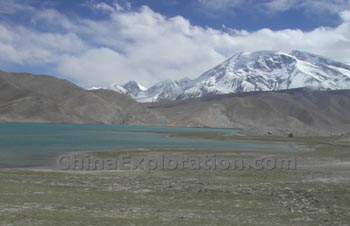search for a Trip
Introduction of Kashgar
Kashgar lays 1,300 meters high on the bank of Tuman river in the middle of an irrigation oasis with cotton and agricultural cultivation. The population of 240,000 is predominantly Ugur. Kashgar only became Chinese around 200 BC, then again during the Tang period and finally during the period of the Qing emperors. Kashgar is the furthest away form the sea of all the big towns and it is closer to Moscow, Islamabad, Delhi, Kabul and Teheran than to Beijing.
Main attractions in Kashgar
Id Kah Mosque
 The Id Kah Mosque is the largest mosque in China and the religious center of Kashgar. The call to Prayer booming from the mosque can be heard throughout the city center. It is said that this place was once a cemetery. The present Id Kah Mosque was built in 1442 as a very small structure. Several renovations and enlargements have created it with today's scale and style. The whole complex occupies 16,800 square meters (about 4 acres) and consists of the courtyard, the Hall of Prayer, and the gate tower and as well as some other attached structures. The mosque exemplifies grand Islamic architecture, with a rectangular entranceway, flanked by intricately designed, slender minarets. The facade of the mosque is filled with yellow and white tiling, interspersed with designs in blues and greens. Inside the mosque there are charming courtyards and gardens where worshippers assemble before entering the halls.
The Id Kah Mosque is the largest mosque in China and the religious center of Kashgar. The call to Prayer booming from the mosque can be heard throughout the city center. It is said that this place was once a cemetery. The present Id Kah Mosque was built in 1442 as a very small structure. Several renovations and enlargements have created it with today's scale and style. The whole complex occupies 16,800 square meters (about 4 acres) and consists of the courtyard, the Hall of Prayer, and the gate tower and as well as some other attached structures. The mosque exemplifies grand Islamic architecture, with a rectangular entranceway, flanked by intricately designed, slender minarets. The facade of the mosque is filled with yellow and white tiling, interspersed with designs in blues and greens. Inside the mosque there are charming courtyards and gardens where worshippers assemble before entering the halls.
Karakuli Lake
The lake's name in local languages is: Kara Kul, literally: "Black Lake". Kara Kul is located about 200 kilometers from Kashgar in the Pamir plateau Range just off the Karakoram Highway (KKH). Kara Kul's elevation is about 3645 meters. The area of Kara Kul next to the KKH is becoming more cluttered with trashy development, but don't let that deter you. The mountain setting is stunning as both Kongur (7719m) and Muztagh Ata (7546m) are visible from the lake. It is possible to trek away from the lake and avoid the developments and trash. The locals inhabiting this area are Kirghiz shepherds. Along the KKH they will likely try to sell you jewelry, rugs and camel rides. Some of their embroidery can be a good deal.

Abakh Hoja Tomb
The Tombs, five km to the northeast of Kashi, are the cemeteries of an Islamic saint and his 72 descendants. The cemetery includes tombs, a gate tower, a recitation hall, a mosque, a fountain and an orchard. It was first built in 1640.
Kashgar old town
Kashgar old town is located at a precipitous position with mud-thatched buildings densely built one atop another. It contains a large group of Uygur residential houses . The Old Town city is now home to 630 homes with more than 2450 people, all of whom are Muslims. The town has a history of over 2,000 years. It was said that Banchao, Eastern Han's envoy to the Western Region once stayed here on his way. It was a summer palace during the Kalahan Dynasty.
Climate of Kashgar
|
Month |
Jan |
Feb |
Mar |
Apr |
May |
Jun |
Jul |
Aug |
Sep |
Oct |
Nov |
Dec |
|
Temperature (Celsius) |
-6.6 |
-5.2 |
4.5 |
15.1 |
19.8 |
24.0 |
27.8 |
26.4 |
20.4 |
15.4 |
11.1 |
-1.0 |
Click to see kashgar tours
China Attractions Guide
- Anhui Attractions
- Beijing Attractions
- Chongqing Attractions
- Fujian Attractions
- Gansu Attractions
- Guangdong Attractions
- Guangxi Attractions
- Guizhou Attractions
- Hainan Attractions
- Henan Attractions
- Hongkong Attractions
- Hubei Attractions
- Hunan Attractions
- Inner Mongolia Attractions
- Jiangsu Attractions
- Jiangxi Attractions
- Manchuria Attractions
- Ningxia Attractions
- Qinghai Attractions
- Shaanxi Attractions


